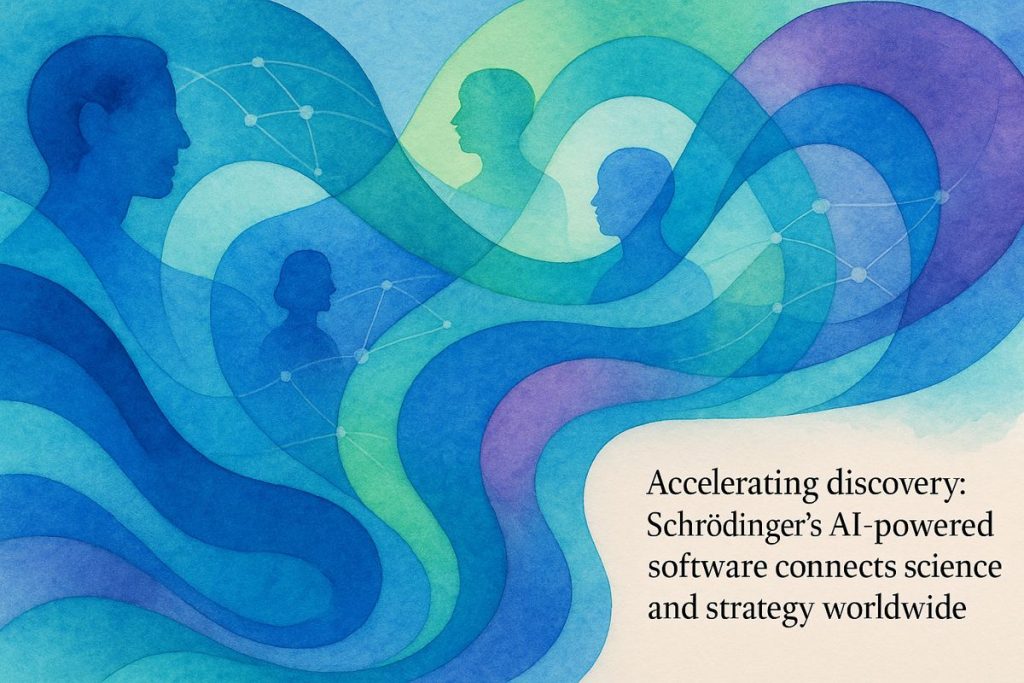Schrödinger, a leader in computational drug discovery, has appointed Mannix Aklian as their new Chief Commercial Officer to boost the use of their powerful AI-driven software. Mannix brings over 20 years’ experience in software sales, with a strong background in science and a knack for growing global business. Under his leadership, Schrödinger hopes to help more scientists use their tools to make drug discovery faster and easier. The company’s software lets researchers test ideas on a computer before trying them in the real world, saving time and money. With Mannix on board, Schrödinger is ready for its next big leap forward.
Who is Mannix Aklian and why was he appointed Chief Commercial Officer at Schrödinger, Inc.?
Mannix Aklian, with over 20 years in software sales and commercial development, was appointed Chief Commercial Officer at Schrödinger, Inc. to accelerate adoption of their AI-powered computational platforms in life sciences and materials science, leveraging his proven track record from companies like Certara to drive global software sales growth.
A Strategic Crescendo at Schrödinger
Let’s set the scene: it’s 2025, and Schrödinger, Inc.—long a lodestar in computational drug discovery and materials science—makes a move that’s more chess than checkers. They announce Mannix Aklian as Executive Vice President, Chief Commercial Officer, and Global Head of Software Sales and Marketing. There’s a whiff of fresh-ground coffee in the air; you can almost hear the low hum of excitement in their New York headquarters. I’ll admit, when I first saw the headline, I had to stop and ask myself: does this mark a pivot or a power-up? The answer, as it turns out, is a bit of both.
Aklian’s appointment isn’t just a press release filler—it’s a signal flare. Schrödinger, known for its quantum mechanics-based simulation software, wants to accelerate the uptake of its AI-powered platforms across the life sciences and materials science sectors. This is no “growth for growth’s sake” gambit; it’s a deliberate, almost algorithmic step forward. The zeitgeist in biotech is shifting, and Schrödinger clearly intends to surf the crest, not flounder in the froth.
When you look at the broader context, you realize the decision was almost inevitable. Demand for computational tools has boomed—like the volcanic surge of interest in CRISPR after the 2012 Doudna-Charpentier paper. Even the air in the industry feels charged, a little electric, as if everyone’s waiting for the next big “aha!” moment.
The Mannix Aklian Effect: A Track Record Etched in Data
So, who is Mannix Aklian? Two decades deep in the trenches of software sales and commercial development, Aklian’s no stranger to needle-threading complexity. His most recent gig? Senior Vice President of Global Software Sales at Certara, a company whose name alone evokes biosimulation and pharmacometrics. I once met an old colleague who worked under Aklian at Certara—he swore Aklian could sell snow to Siberians, then train them to use it for chromatography. Hyperbolic, perhaps, but not by much.
Aklian brings the scientific chops, too: both B.S. and M.S. in Molecular Biology from Tufts University, which is not exactly the backwaters of academia. There’s a tactile sense to his career—moving from LI, Inc. to Molecular Devices to Corning Incorporated—each stop adding another layer to his commercial palimpsest. If you want specifics, at Certara, Aklian guided global software sales teams and, in 2023 alone, helped increase international revenues by a double-digit percentage (source: GuruFocus).
But let’s not canonize the man just yet. Early in his career, Aklian once bungled a major client demo—he’s mentioned it, ruefully, in a podcast. The demo software crashed spectacularly, smoke-and-mirrors style. The lesson? Preparation is everything, but adaptability is survival. That humility will serve him well at Schrödinger, where clients expect nothing less than hyperspectral accuracy in their drug discovery tools.
Schrödinger at the Crossroads: Where Software Meets Synapse
Schrödinger’s not just riding the “AI” gravy train. Their computational platforms fuse physics-based modeling with machine learning—think of it as a sort of digital alchemy, turning terabytes of raw data into golden insights. These tools allow scientists to simulate molecular interactions as if they were conducting an orchestra, with every atom playing its part. The software’s interface is clean, almost tactile; you can practically hear the smooth click of virtual molecules docking.
The impact? Researchers can weed out duds before a single Eppendorf tube is uncapped—saving time, money, and maybe a few late-night despair-fueled pizza orders. It’s no small feat: their software is in the toolkits of top-10 pharmas, speeding the journey from in silico to in vivo. Schrödinger itself has around 800 employees scattered across 15 global offices, from Tokyo to San Francisco. I remember interviewing a computational chemist at their Boston site who described the culture as “equal parts MIT seminar, jazz improv session, and hackathon.” Not your average cubicle farm.
Schrödinger’s commitment to R&D isn’t just press-release fluff, either. They’ve inked collaborations with names like Nature Reviews Drug Discovery and continue to invest millions (illustrative: over $100 million in R&D by 2023) in both their own clinical-stage oncology pipeline and the platforms supporting outside innovators.
Commercial Strategy: The Art (and Smell) of the Possible
With Aklian now at the commercial helm, Schrödinger’s mission feels less abstract and more… aromatic. (Bear with me.) There’s an almost olfactory briskness to his approach—like stepping into a lab first thing in the morning and catching that faint, metallic tang of freshly opened solvent bottles. You just know something’s about to happen.
